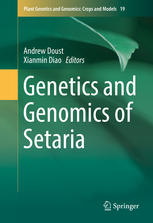

Most ebook files are in PDF format, so you can easily read them using various software such as Foxit Reader or directly on the Google Chrome browser.
Some ebook files are released by publishers in other formats such as .awz, .mobi, .epub, .fb2, etc. You may need to install specific software to read these formats on mobile/PC, such as Calibre.
Please read the tutorial at this link: https://ebookbell.com/faq
We offer FREE conversion to the popular formats you request; however, this may take some time. Therefore, right after payment, please email us, and we will try to provide the service as quickly as possible.
For some exceptional file formats or broken links (if any), please refrain from opening any disputes. Instead, email us first, and we will try to assist within a maximum of 6 hours.
EbookBell Team

4.4
12 reviewsSetaria viridis and S.italica make up a model grass system to investigate C4 photosynthesis, cell wall biosynthesis, responses to drought, herbicide, and other environmental stressors, genome dynamics, developmental genetics and morphology, and interactions with microorganisms. Setaria viridis (green foxtail) is one of the world’s most widespread weeds, and its small size, native variation, rapidly burgeoning genetic and genomic resources, and transformability are making it the system of choice for both basic research and its translation into crop improvement. Its domesticated variant, S. italica (foxtail millet), is a drought-hardy cereal grown in China, India and Africa, and new breeding techniques show great potential for improving yields and nutrition for drought-prone regions. This book brings together for the first time evolutionary, genomic, genetic, and morphological analyses, together with protocols for growing and transforming Setaria, and approaches to high throughput genotyping and candidate gene analysis. Authors include major Setaria researchers from both the USA and overseas.